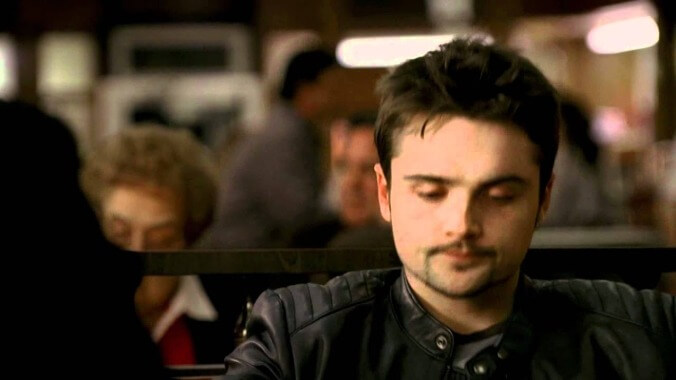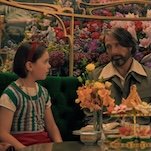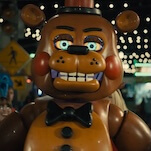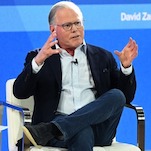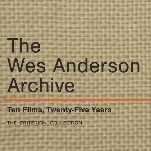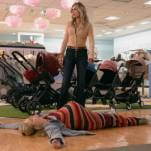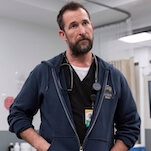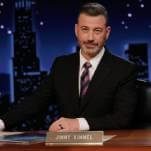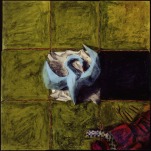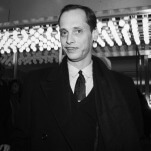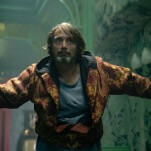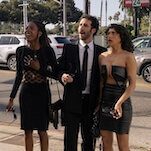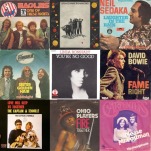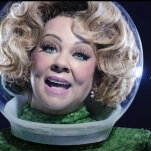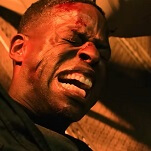Chase: I think so. Once he said that, in a way, I was being given an alternative. “Do you want this or not?” So I said, “Yes.” If he hadn’t come to me and said that I probably would’ve ended it some other season and said, “Let me go off and make movies now, that’s my dream.” His statement kind of gave me a structure, an endpoint that I could see.
Sepinwall: But you said you didn’t try to plan too far ahead. When you said there was an endpoint, you don’t mean Tony at Holsten’s, you just meant, “I think I have two more years’ worth of stories in me.”
Chase: Yes. I think I had that death scene around two years before the end. I remember talking with [writer and executive producer] Mitch Burgess about it, but it wasn’t—it was slightly different. Tony was going to get called to a meeting with Johnny Sack in Manhattan, and he was going to go back through the Lincoln Tunnel for this meeting, and it was going to go black there and you never saw him again as he was heading back, the theory being that something bad happens to him at the meeting. But we didn’t do that.
Seitz: You realize, of course, that you just referred to that as a death scene.
[A long pause follows.]
Chase: Fuck you guys.
[Seitz and Sepinwall explode with laughter. After a moment, Chase joins in for a good 30 seconds.]
Chase: But I changed my mind over time. I didn’t want to do a straight death scene. I didn’t want you to feel like, “Oh, he’s meeting with Johnny Sack and he’s going to get killed.” That’s the truth of it.
“I didn’t hesitate to follow up with David, and I’m glad I did follow up, because he clarified that when he used that phrase, he wasn’t talking about Holsten’s, but an earlier idea that he decided to move away from,” Seitz told The A.V. Club. “I seriously doubt that’s going to dissuade anybody from believing whatever it is they already believe, though. If the last 12 years have taught us anything, it’s that, to misquote a famous Simon And Garfunkel song, a Sopranos fan will hear what he wants to hear and disregard the rest.”
Noting Chase’s past reluctance to talk about the show’s ending, Sepinwall said that bringing up the original idea and saying the words “death scene” out loud—even if they didn’t apply to Holsten’s—“seemed like a pressure release valve for Chase on the entire topic.”
“We spent close to an hour talking about his intentions for the Holsten’s scene, and even though he never outright said what happened when the show cut to black—nor, by that point, did we want him to—we felt like we understood the intentions behind the scene, which is all that ultimately mattered to us.”
The Lincoln Tunnel scenario would’ve retained its own degree of ambiguity, since it wouldn’t have depicted the meeting or Tony’s death. But that doesn’t prevent a further slip of Chase’s tongue—“I said he was going to a fatal meeting”—that indicates, at least at one point in time, Tony Soprano’s life ended with The Sopranos.
As for the ending Chase ultimately chose, he reiterates in The Sopranos Sessions many of the points he previously made in this DGA Quarterly article, describing the stylistic cues he took from 2001: A Space Odyssey’s own enigmatic finish, and confirming the choices that were intentional (creating suspicions about the guy in the Member’s Only jacket) and coincidental (it’s just a happy accident that the jukebox listing for a second Journey track, “Any Way You Want It,” is seen during one of the most any-way-you-want-it-that’s-the-way-you-need-it moments in TV history). There’s no definitive answer as to whether or not Tony lives or dies after the audio and video cut out—we’re just meant to feel like he could die at that moment, or any moment. That could be the case for any of us, whether we’re a fictional New Jersey mob boss or if we’re one of the countless real people who’ve spent the past decade trying to suss out whether or not a fictional New Jersey mob boss got whacked at an ice cream parlor.
“I like to think the beauty of this ending is that it draws out of the viewer whatever their preoccupation and mindset happen to be,” Seitz said. “If you treat art as a puzzle and require answers, you can solve this however it suits you and be done with it. Or you can allow it to linger, which is what I choose to do.”
